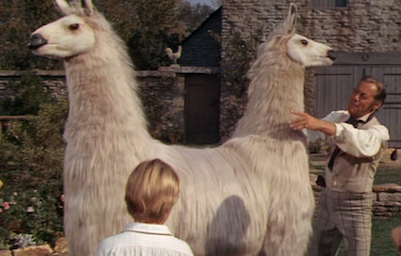 Academic Funding
Academic Funding Whither, or Wither, Social Science at the NSF?

On the appropriations side the assault on social science funding turned out to be a tame beast — this time.
The Republican leadership in the U.S. House of Representatives delivered a message to social science last week: we’ve weighed you and found you wanting. In two separate House bills that set funding for the National Science Foundation, a federal agency that pays for more than half the university-based social, behavioral and economic research in the United States, Republican lawmakers introduced specific amendments that reduced spending on social science research compared to spending for this year.
The gist of the arguments made against the social sciences is two pronged—that they’re silly (“questionable” is popular nomenclature) at worst and at best the U.S. can’t afford to pay for the research when there’s a huge and growing national debt. Part of the second argument sets up a zero-sum competition between the so-called “hard” sciences that presumably produce direct and immediate payoffs and social sciences that, in this view, don’t. There’s been a tit-for-tat feud in the House, as Republicans cite projects they find questionable–spending $270,000 to study pictures in National Geographic–while Democrats volley back with odd-sounding projects that later paid remarkable dividends–monkey brain research that now powers thought-activated prosthetic limbs.
The practical effect of last week’s amendments, which were accompanied by the public shaming of specific suspect grants made by the NSF, remains to be seen. The most serious attack on social science spending—a 42 percent cut in the budget of the Directorate for Social, Behavioral and Economic Science at NSF—is contained in an authorization bill that faces increasing time constraints, not to mention political constraints in the Senate, before it can pass this year.
Timeline
House GOP Officials Slap at Social Science Funding (May 29)
$50 Million SBE Cut Moves Forward to the Full House (May 28)
House Panel Wants to Strip That $50 Million from SBE Again (May 21)
Two Visions of NSF Funding Before House This Week (May 19)
NSF Funding Bill Report Includes Two Curious Items (May 7)
Largest-Ever NSF Budget Passes First Test (April 30)
National Science Board Critical of FIRST Elements (April 24)
NSF Boss Finds Friendly Reception in Appropriations Panel (March 27)
NSF Chief Presents Budget to House Thursday (March 21)
FIRST Bill Passes First Legislative Hurdle (March 13)
Social Science Advocates Uniting to Oppose FIRST (March 11)
How Much NSF Funding Goes to Social Science? (March 10)
Cuts to Behavioral and Social Science Funding Threatened (February 26)
And a second attack, this one in the appropriations bill for the Commerce, Justice and Science arms of the federal government, was accompanied on the House floor by a full measure of fulminations against taxpayer-money-wasting social science, but in the end doesn’t change the NSF budget at all. Leading the charge, and making his only appearance during floor debate on the bill, was House Majority Leader Eric Cantor. He cosponsored, with Science Committee Chairman Lamar Smith of Texas, the amendment that took $15 million away from the NSF’s research budget—and then gives it right back. The full bill, with that pushmi-pullyu amendment contained, passed the House in the wee hours of Friday morning.
Unlike the authorization bill, the appropriations bill must pass. It was taken up by a Senate Appropriations Committee subpanel on Tuesday and passed on a voice vote. The full Senate committee will review the bill Thursday. The bill offers NSF $7.25 billion, or $83 million more than what it received in the current fiscal year.
Speaking of the Senate, that chamber—currently controlled by Democrats—is expected to take up its own authorization bill for the NSF, which will differ markedly from the House bill. That Senate legislation will aim to reauthorize the America COMPETES Act, a landmark bipartisan effort first passed in 2007 “to invest in innovation through research and development, and to improve the competitiveness of the United States.” COMPETES funds all manner of federal technology and science education programs, with fingers reaching into NASA, National Oceanic and Atmospheric Administration and the Department of Energy, among others.
The Republican bill in the House, known as FIRST (for Frontiers in Innovation, Research, Science, and Technology), does not fully reauthorize COMPETES. Instead, it only authorizes NSF and National Institute of Standards and Technology spending, leaving the other programs’ authorizations to different legislation.
In theory, any federally funded program needs both authorization to proceed and appropriation in order to have any actual cash. But appropriation tends to matter more, for obvious reasons, on what is actually spent. (In addition, there are many examples of programs happily existing for years with no authorization legislation.) As it stands, there are three proposed budgets for the NSF circulating—a $7.3 billion request from the White House, the $7.2 billion proposed in FIRST, and $7.4 billion in the appropriations bill. All represent increases from the current enacted budget for the NSF, and no one wants to be seen getting in the way of funding those so-called hard sciences—the STEM fields.
FIRST introduces another wrinkle into the funding mix that the appropriations bill doesn’t. FIRST sets specific funding for each of the NSF’s research-funding directorates (such as SBE), something that was last seen in congressional language in 1998. This granular control has upset the science community, including the National Science Board that oversees NSF, which sees the intrusion as inserting politics into a merit-based system and as micromanagement. Democrats on the House Science committee—the panel responsible for drafting FIRST—tried to remove this aspect of the bill but were unsuccessful.
“The majority included it in their bill so they could pick and choose the science they believe in, and that they believe is important,” argued Eddie Bernice Johnson, the ranking Democrat on the House Science committee, “rather than allowing the experts to make these decisions.” Johnson introduced a Democratic COMPETES reuthorization bill in the House; given her party’s minority status that effort has never advanced.
But rather that looking for effects of the legislation this year, the Republican leadership has hinted that it is playing a longer game, perhaps hoping that mid-term elections will give their party control of the Senate as well as the House, strengthening their hand. Smith called the symbolic $15 million switcheroo a “first step” in reining in questionable NSF grant-making, and suggested that the drastically trimmed SBE budget in the FIRST bill–$150 million compared to $256 million in this year’s budget—would be the starting point of next year’s discussion. SBE, by the way, is responsible for 3.5 percent of the total NSF budget in the current fiscal year.
This position is not out of character for the Republican leadership, which has long been seen as having an animus against social science, in particular political science. Last year, for example, Sen. Tom Coburn successfully inserted a prohibition on NSF funding for political science unless that research was in the economic or security interests of the U.S. (That prohibition has since expired.) Jeanne Zaino, a political scientist at Iona College, and others have traced this strain back to the science boom that followed World War II, when social science was first officially tagged as an academic luxury:
Following [Vannevar] Bush’s lead, the newly formed NSF – created by Congress as an independent agency in 1950 – did not support political science research for more than a decade. It wasn’t until 1965 that the political science program was formally created. After a brief 15 year respite, political science funding came under attack once again during the early years of the Reagan administration. This has not only continued, but intensified, in recent years.




















































































